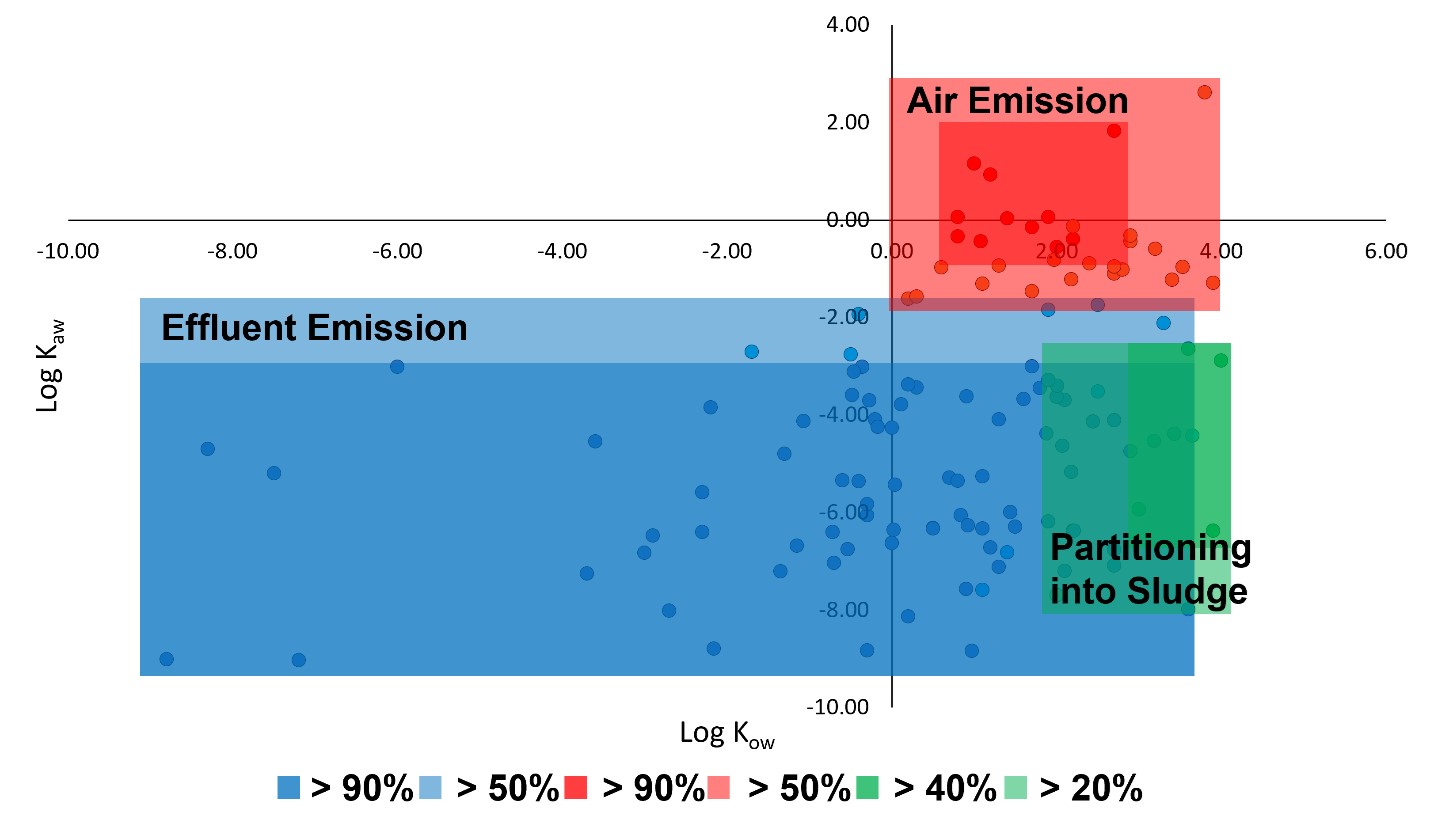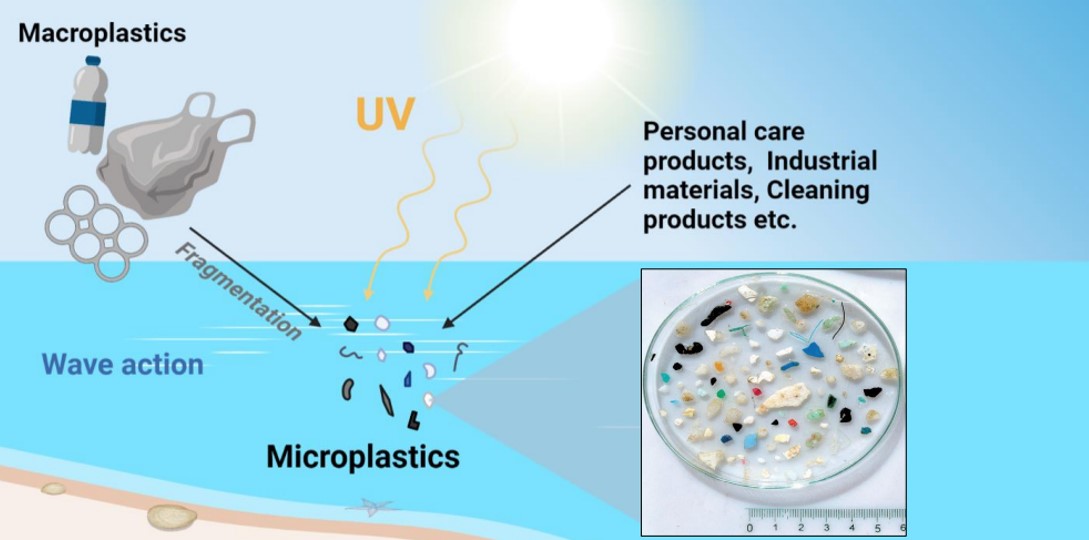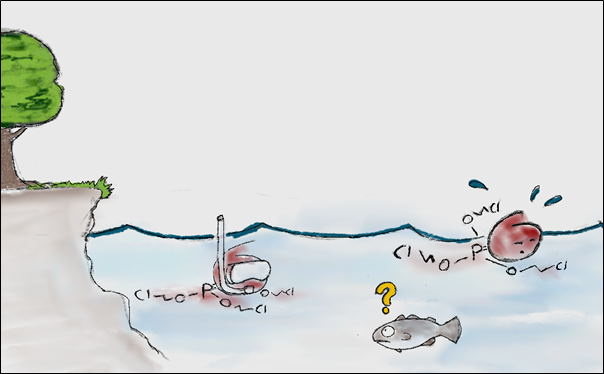Fate & Behaviour of Contaminants

We investigate the physical-chemical and environmental mechanisms that govern the behaviour of contaminants in the environment. For example, we are interested in how plastics can act as transport vehicles for contaminants into the Canadian Arctic, whether contaminants are retained in wastewater treatment plants, and how the chemical “fingerprint” of microplastics changes due to weathering.

 Projects
Projects
 heading
heading
Sources & fate of plastic contaminants in the environment-novel analysis strategies to evaluate human & environmental exposure
To evaluate potential risks from plastic contaminants, established methods for chemical risk assessment need to be adapted to account for the specific environmental transport and fate of microplastics and emerging plastic additives. The aim of my long-term research program is to facilitate this process by developing methods to understand the underlying mechanisms for plastic contaminant occurrence and transport in the environment. Within the five years of the Discovery Grant research, we will identify plastic contaminants with a high risk for human exposure from a product life cycle point of view, with a focus on potential contamination of freshwater and drinking water resources in Toronto.
The short term objectives for this research are to:
- Identify priority plastic contaminants in urban water which are highly linked to human exposure,
- Analyze microplastics as co-contaminants or sources for persistent and mobile organic contaminants (PMOCs),
- Determine how contaminant profiles and potential emissions of plastic contaminants into water and food change over the “life-cycle” of a plastic product.
These short term objectives will be achieved through a combination of state-of-the-art chemical analysis,multivariate statistical analysis of factors that impact the potential for human and environmental exposure, and experimental investigation of PMOC mobility.
The outlined research will create new knowledge on the PMOC physical-chemical properties and plastic product properties that impact plastic contaminant patterns and concentrations in consumer products and drinking water in Canada.
- Tanjot grewal
- Eric Fries
- Mandana Barghi
- Brunela costanzo
- University of Toronto


 heading
heading
Identification and prioritization of persistent, mobile and toxic plastic additives in Western Lake Ontario urban waters
PMT substances have been recognised as having the potential to impact environmental and human health. However, there are significant challenges associated with their identification, quantification, and assessment in the environment given the diversity of chemistries and properties they encompass. Using an innovative combination of computational analysis, observational and experimental studies with state-of-the art analytical techniques, this project addresses some of these challenges.
The project assesses a diverse suite of PMT compounds focussing on plastic additives, their sources and input pathways to western Lake Ontario by:
- Investigating the importance of effluent from wastewater treatment plants compared to stormwater run-off as sources of PMTs/plastic additives into western Lake Ontario compared to indicator PBT/plastic additive compounds
- Evaluating watershed land-use and microplastic contamination influences on PMT/plastic additive concentrations and patterns in an urbanized watershed
- Identifying priority PMT/plastic additives based on their presence in different watersheds discharging into western Lake Ontario receiving waters, and their predicted environmental risk
The results of this project will provide a comprehensive list of priority PMT/plastic additives of concern in western Lake Ontario and its watersheds that can inform future monitoring strategies and regulatory priority setting. The combination of mechanistic evaluation of transport pathways, impacts of different land-use activities and microplastic co-contamination, and the potential for retention in wastewater treatment plants compared to stormwater will enable evidence-based decisions on the expected effectiveness of end-of-pipe emission reduction measures through e.g. investment into enhanced wastewater treatment technologies compared to regulatory emission reduction and control measures.
Ontario Ministry of the Environment, Conservation and Parks
- Tanjot grewal
- Eric Fries
- Mandana Barghi
- University of Toronto
- Environment and Climate Change Canada
- Arnot Research & Consulting


 heading
heading
Identifying the impact of weathering on the leachability of plastic additives from different plastic products
Plastics in the environment are constantly exposed to environmental conditions that can alter the structure and properties of the plastic. This “weathering” due to e.g. UV light, water, and mechanical stress can grind larger plastic items into microplastics as well as leach plastic additives that are contained within the plastics. However, there is still little information on the kinetics of plastic additive leaching from microplastics in the environment - and how weathering impacts this process.
In this project we subject microplastics as well as larger plastic products to artificial weathering and test the leaching kinetics of a wide range of plastic additives. The results help us determine whether plastics can act as long-term sources for plastic additives into the environment and what type of products leach potentially hazardous compounds.
- Eric Fries
- Ericka De Oliveira
- Melissa Solomon

